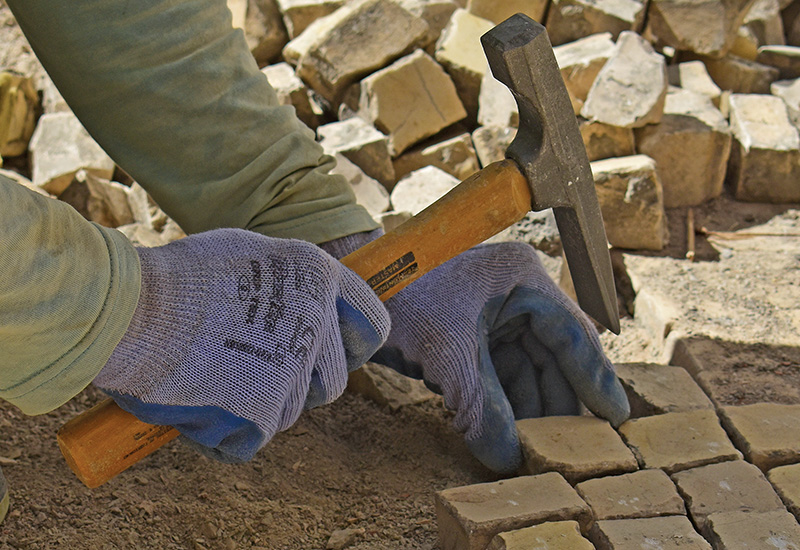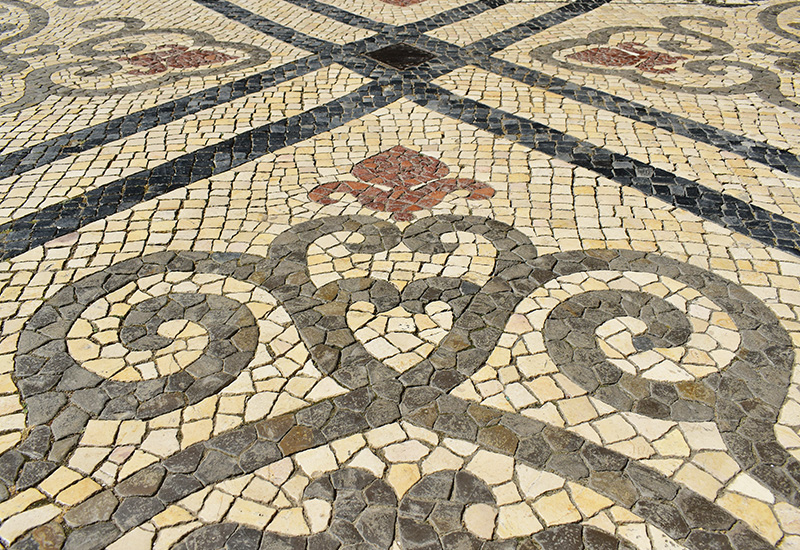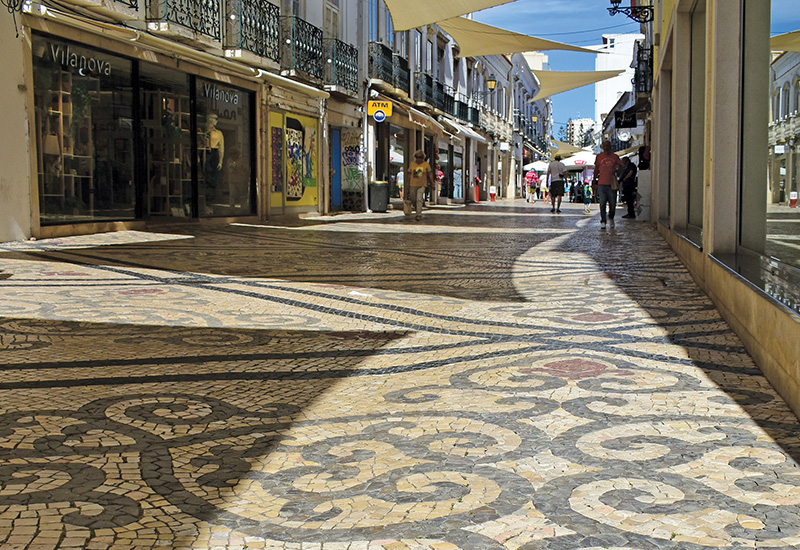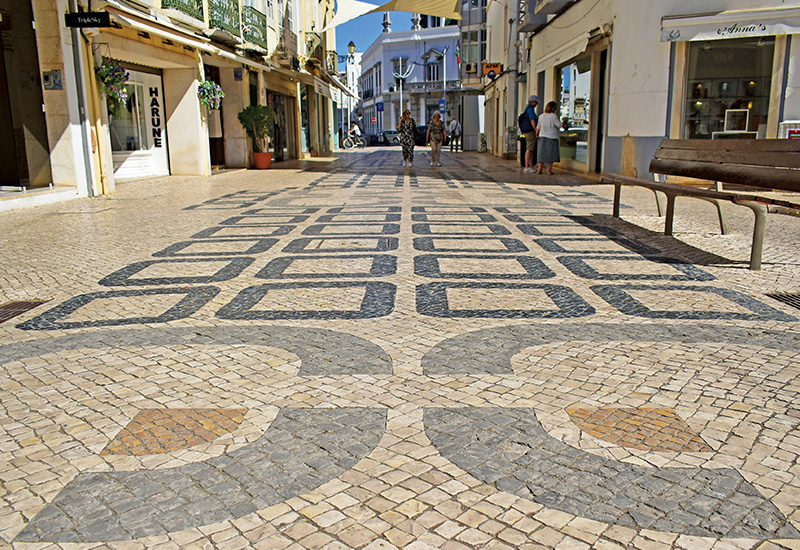Whilst walking around my home town of Faro and looking down at the wonderful calçada, I thought it would be good to find out something about its history and social significance. A very interesting story came to light.
The oldest evidence of covering large surface areas goes back to the land of Mesopotamia, now known as Iraq. Dating to around 4000 BC, these stones were discovered in the ancient city of Babylon. Made out of sun-dried mud bricks, they were literally as hard as stone.
Move forward a couple of thousand years and we find that civilisations such as the Mayans in Central America and the Egyptians built their classic temples, pyramids and cities out of raw stone. Therefore, by the time we arrive at the rise of the Roman empire, the skills required for building with stone were well established. The famous Roman “cobblestone” (from cobbled stone) roads began to spread across Europe in all directions, including, of course, Portugal.


These highways of transportation needed to be strong enough to carry the weight of a marching army, including heavy goods and weaponry, as well as providing a network for trade and communication. The technique of compacting small interlocking stones achieved this with great efficiency, while the spaces between the stones also allowed for vital water drainage. Along with the bridges, castles and aqueducts of this period, these highways were built to last. But it was not a simple case of getting from A to B by the quickest route. It was about building an empire.
Each stone laid was literally paving the way for expansion and development. It seems to me they also presented a statement of intent – we are here to stay!
Like the Romans, many civilisations have crumbled, but much of their stonework remains intact as a reference to their existence.
Clearly, the tradition of calçada Portuguesa was partly inspired by the Romans. But there is an additional element beyond strength, endurance and practicality: aesthetics. While not unique to the Romans, they were also masters of the art of mosaics. They used stone for beautiful decorative works of art, which was another obvious inspiration to draw from. Taking into account the occupation of other cultures over time and the social interaction through intercontinental trade, elements of Islamic and Moorish patterns would also have been a rich source of design inspiration for the calçada pavements. They originally started to emerge in the nineteenth century throughout the country. Before I look at this, a trip back to the fifteenth century provides another important chapter of the story – and it’s all to do with ships.
The Portuguese were doing some of their own empire-building around this time by sailing around the world and forming colonies. The problem was, in order to bring the rewards of these journeys back home, the ships had to leave empty. The empty ships did not fare well at sea, but the solution was a simple one – take stones to act as ballast and then use them to build pavements and public squares in the new settlements. Many of the patterns and motives in the calçadas seen today in countries like Macao, Brazil, Timor and others reflect the maritime theme in remembrance of these voyages of discovery.

I can only assume that the limestone being used was easily available and the manpower to work it and transport it was affordable but I do question why they would go to such lengths. Why not just make use of the materials available in these new lands? In my opinion, it comes back to the essential considerations of design and a desire to create harmonious environments to inhabit. With the substantial wealth being brought into the country, these were prosperous times. Along with celebrating their architecture, the Portuguese passion for ceramic tiles and other decorative elements also left their mark. Their new colonies were the chance to make another bold statement about the wealth and success of their culture.
Apart from the tragedy of the horrific earthquake that destroyed Lisbon in 1755, when the resulting rubble was used to pave the new streets, little has been reported about the use of calçada until 1842. This is the year when a group of prisoners completed the first decorative calçada inside the São Jorge Castle in Lisbon, which served as a prison at the time. After the success of this venture, the same grilhetas were commissioned again to work on an area of over 8,000 m² in the now famous Praça do Rossio. Seen as a new concept in urban modernisation, this fusion of road-building techniques married with those of artistic mosaics became a trend that quickly spread across the whole country and the colonies. If you were one of the in-demand calçeteiros you would have had no problem finding work overseas and teaching your skills for a good income.
Looking to the future, some reports are not good for continuing this tradition. Due to the high cost of maintenance and production of the stone, it seems like it won’t be long before the use of cheaper materials will take its place in new urban projects. However, as I sat and watched a very hardworking man sweat under the afternoon sun, meticulously laying one stone at a time into place, a thought came to me. One day, someone else will be observing a team of automated calbots moving around town to find and patch up the misplaced stones with a level of precision that the Roman engineers of old would have admired.













